Discover the learning platform powered by collaborative learning.
A 15-minute discussion with an expert
100% tailored to your needs - with ❤️
No commitment. Free as can be.
According to the Harvard Business Review, 75% of managers are “dissatisfied with their company’s learning and development function.” This is a massive problem: without a manager’s endorsement, it’s next to impossible to get the employee buy-in you need to make learning programs useful.
So, how can L&D departments create better learning experiences—ones that produce real results? Start with picking the right tools. Not every learning management system is created equal: There are various standard and premium features that come with each LMS. The right LMS can go a long way toward making your learning programs more effective.
Use our guide to LMS features to help you select an LMS that will enhance your learning programs and your L&D team’s workflow.
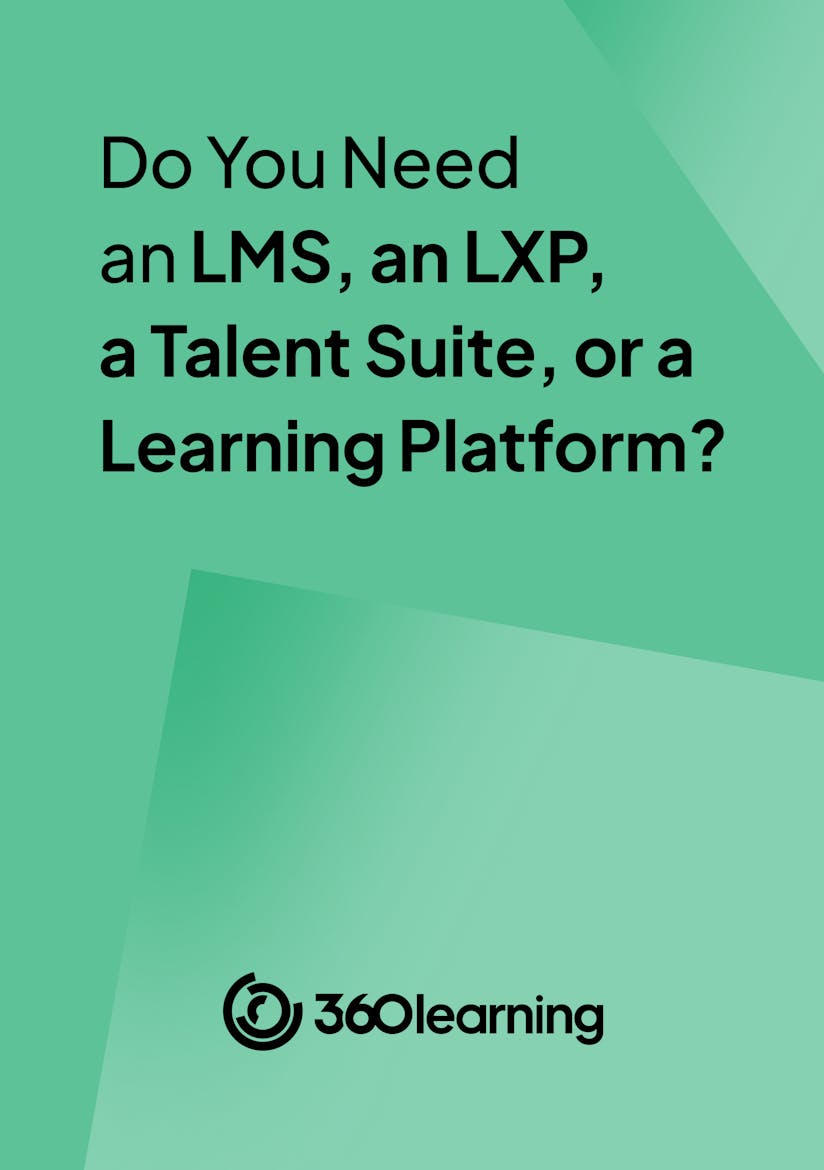
By providing your contact info, you agree to receive communications from 360Learning. You can opt-out at any time. For details, refer to our Privacy Policy.
At its core, every LMS offers course creation, course management, and course delivery tools.
Course creation tools let you build courses or learning paths for your employees on the training topics you want them to learn, allowing you to choose the exact topics covered in your L&D program.
The available content formats for a course vary by program, but they can include text, documents, quizzes, assessments, videos, and other kinds of media. You can combine original content and properly sourced media from the internet to create the learning paths your employees need.
Moreover, a competitive learning solution will incorporate functionality for AI-generated course creation to ramp up the design of learning materials. For example, 360Learning's AI-powered authoring tool enables you to craft a course from an existing document in one click and deliver personalized training courses in minutes.
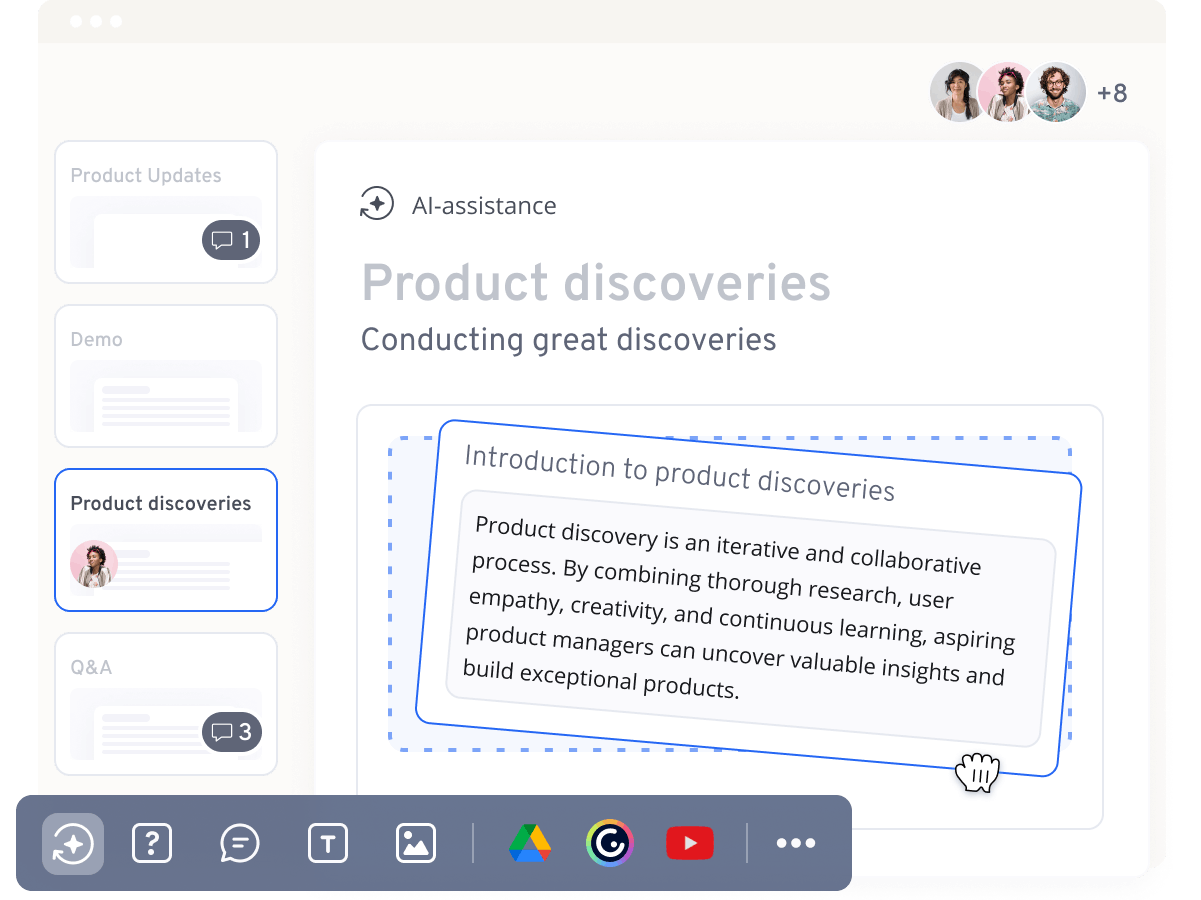
Some platforms also let you create training programs that consist of multiple courses. Once you create a set of related courses, you can categorize them into a program to ensure that learners take them in their intended order.
Sharable Content Object Reference Model (SCORM) is a technology format readable by most LMS software. SCORM compliance simply means that you can purchase courses from a third-party vendor and upload them to your LMS.
Your LMS should be SCORM-compliant, although the format is quickly becoming outdated as more companies realize the importance of custom learning content. Many SCORM courses available for purchase out generic, old-fashioned looking, or simply outdated. Still, for certain subjects, like compliance training, you may wish to purchase courses instead of creating your own.
Content management features let administrators define how different learners use the same system. An LMS with content management capabilities allows for actions such as:
An LMS will include automated user management features to save admins time (and money). By automating the busy work of managing all the learners within your organization, an LMS will also be able to scale as the business grows.
A must-have functionality for user management is single sign-on (SSO) for learners, which will boost security and create a seamless experience for learners. Look for functionalities that allow you to easily group learners based on their learning needs and provide them access to your online courses while giving your admins full control over the training content.

LMSs also have analytics features that range in complexity. With LMS analytics, you can examine how learners interact with your courses. Some of the most common metrics analyzed in LMS platforms include:
Many LMS's will compile this data into regular LMS reports or dashboards so you can see how effective your programs are at driving the learning outcomes you desire. For example, monitoring your new employee onboarding training course module completion rates helps you understand how you could improve course material to improve retention and competency.
Course delivery is the last step of the LMS lifecycle. With an LMS’s asynchronous eLearning functions, employees can learn at any time they want from their own computer. This means they don’t have to log on at the same time as the instructor to complete a course, while also making it possible to offer blended learning experiences simultaneously.
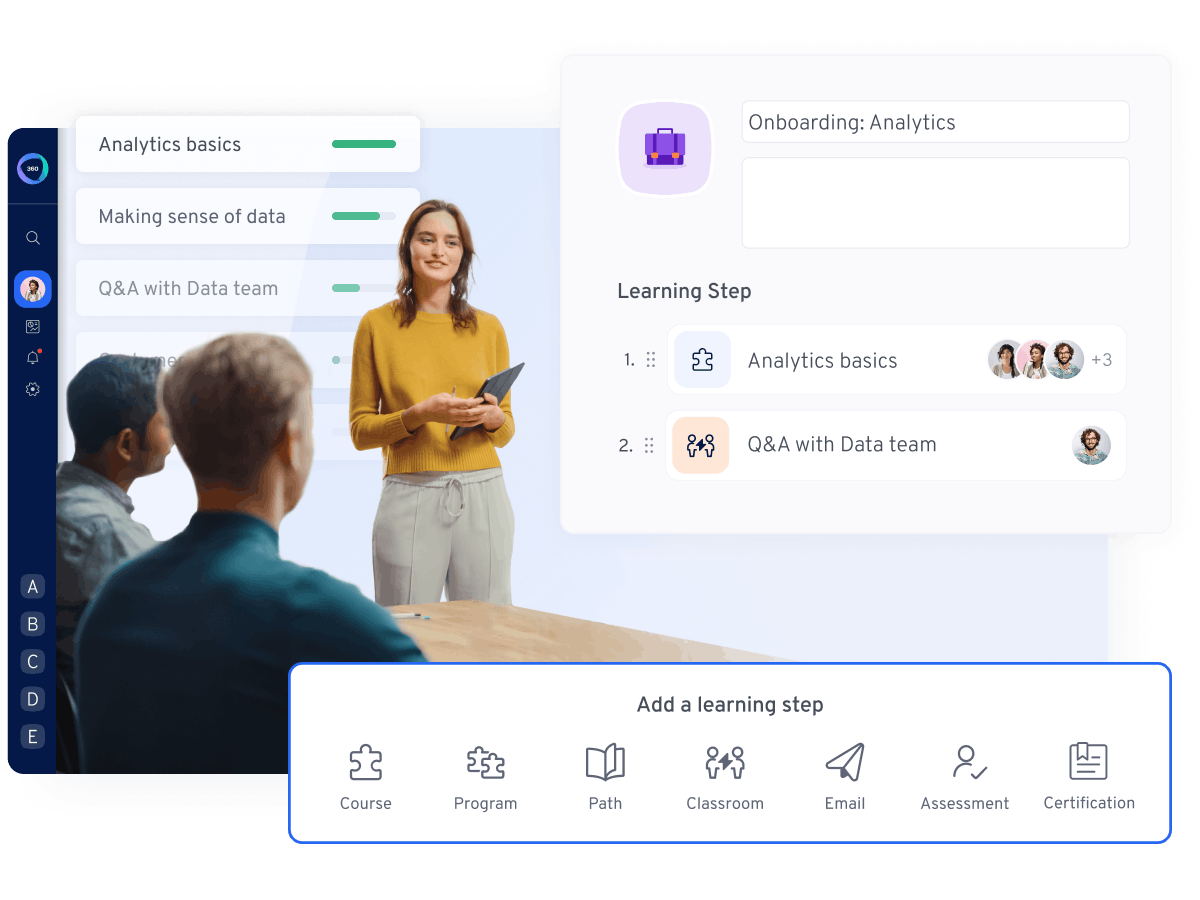
Advanced LMS features aren’t necessary to the core functionality of an LMS, but they have a large role to play in a platform’s utility to the user. Look for an LMS with these features for an easier, deeper learning experience.
While basic analytics functions are useful, real-time analytics and in-course feedback help you create much stronger courses.
Common examples of these features include ratings and comments. Ratings provide quick pulse checks throughout a course that provide numerical data on learner satisfaction. Learners can also comment on a section, course, or program to offer more specific feedback.
Feedback features can also go more in-depth than comments and ratings for richer information. For example, 360Learning's Reactions and Relevance Scores make it simple for learners to provide their opinions while giving you more nuanced insights on average.
Automated compliance training features help you and your team orchestrate mandatory training end-to-end by leveraging the automation of learner enrollments, reminder notifications, certificate expiration alerts, and comprehensive audit-proof reporting.
These features should offer the capability to integrate off-the-shelf standard compliance training materials or to create hyper-relevant company-specific training with the help of your organization’s internal subject-matter experts.
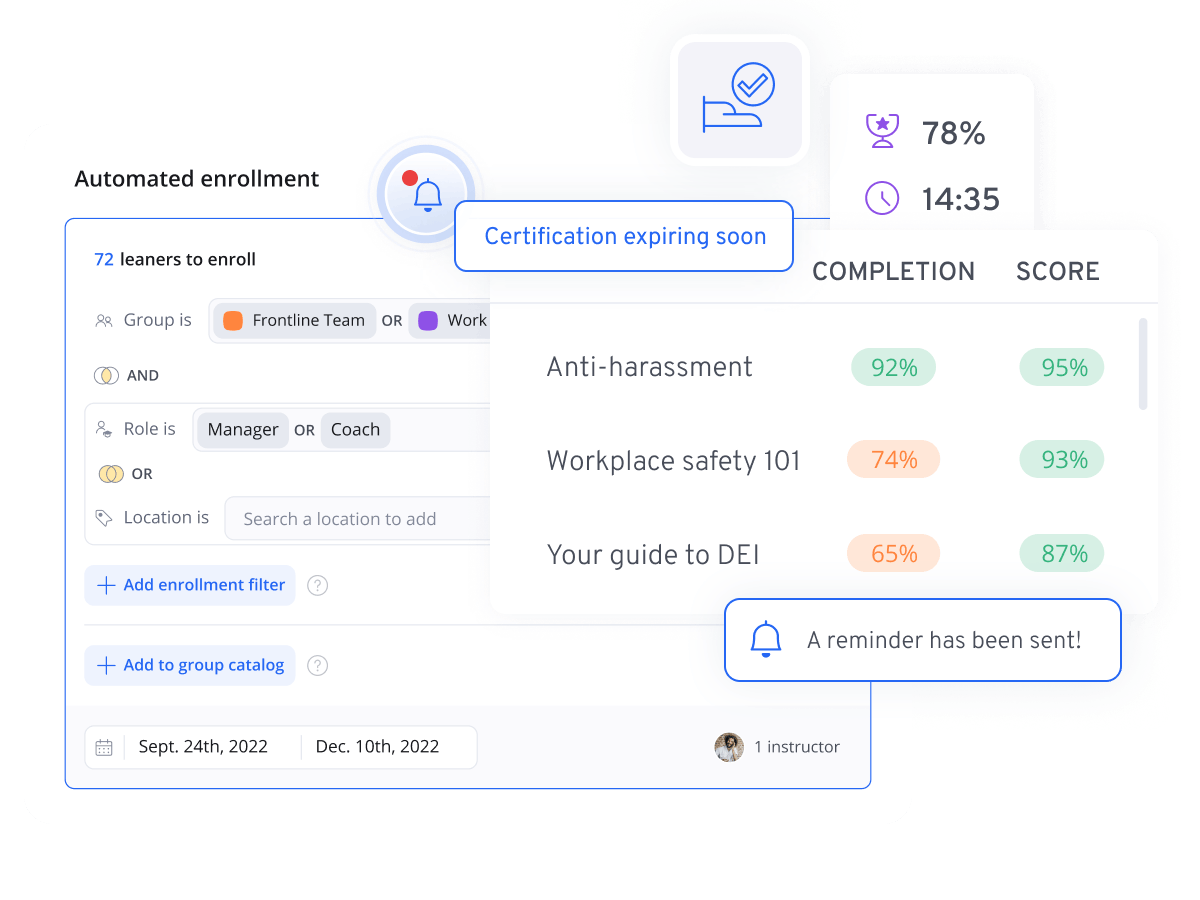
Mobile learning functionality is a great way to ensure your learners have the flexibility to access compliance training on their smartphones in the flow of work. Be sure to check that your new LMS has a responsive design on mobile devices so learners have a smooth user experience while completing their online training.
Gamification features use game design principles to encourage learning, and can take many forms in LMS learning. Research shows that gamification can improve learning outcomes for participants.
Learners can receive rewards and achievements for reaching learning milestones or compete with one another to get the highest learning accomplishment. Others use leaderboards to create natural competition between learners.
Many different learning formats work well with gamification. Gamification features can apply to competitive or collaborative learning. Trainers have opportunities to gamify both passive learning (related to absorbing information) and active learning (related to completing learning activities).
Third-party integrations enable an LMS to work with outside platforms across departments to streamline training operations. Examples of third-party integrations in LMS platforms include:
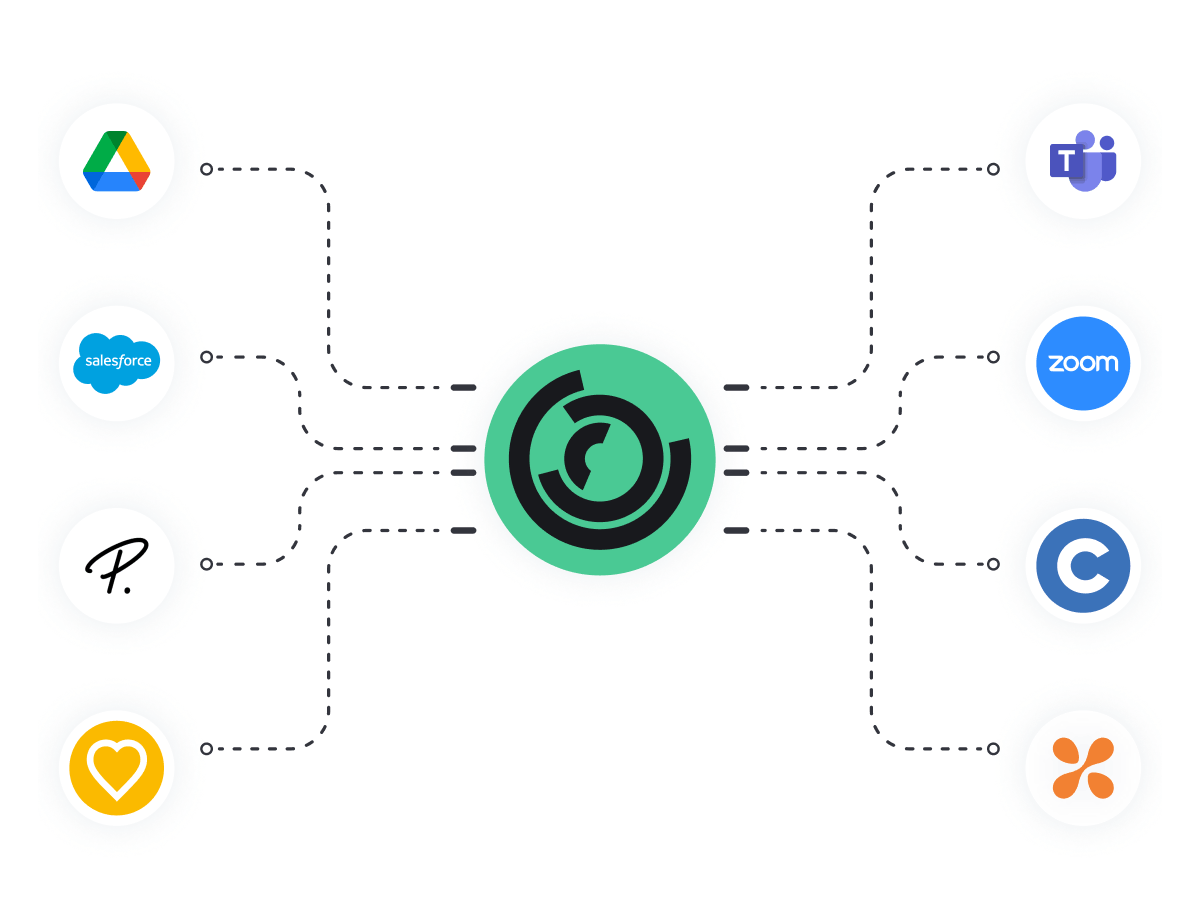
Some LMSs include co-authoring features where multiple users can collaborate on course creation. Platforms that support co-authoring can have collaborative features like:
With these capabilities, users can work on the same course synchronously or asynchronously and share input. These features also provide customization opportunities for improving course relevancy to a broader range of people.
The best learning management systems also function as collaborative learning platforms that prioritize a bottom-up learning framework over the traditional top-down model. They promote the collaborative learning model, in which employees learn from and with one another.
In line with the principle of decentralized learning, collaborative learning platforms let learners declare or request training needs. Other employees with the relevant expertise can volunteer to fill that skills or knowledge gap by creating a relevant course or training material.
Letting employees propose topics they want to learn about makes training needs analyses more accurate and less resource-intensive for L&D departments. It also helps drive learner engagement, as regular feedback makes your learning paths more relevant to your employees.
Collaborative learning platform often have user interfaces that makes it easy for any participant to create a course for their peers. As a result, anyone at your company has the power to share their unique knowledge, which helps drive peer and social learning initiatives.
Collaborative learning platforms also prioritize fast and easy course creation to adapt to the needs of decentralized teams with various skill levels. To make course creation simpler and to build a better overall user experience, collaborative learning includes course creation features like:
Collaborative learning should make it easy for learners to provide feedback while they're learning. Collaborative learning platforms enable instant feedback through user interface features like:
These functions allow you to get even more granular as you assess the accuracy and efficacy of each course offering.
When choosing an LMS for your organization, a cloud-based learning platform that facilitates offline and online learning is a great place to start. Next, review the features available and how they can benefit your team. Set learning goals and find a platform with features that meet those benchmarks. Then, you can continually evaluate your learning needs and whether your LMS is meeting them.
A comprehensive learning platform like 360Learning combines the features of an LMS, LXP, and collaborative learning Academies with powerful automation and AI-powered features to help you streamline daily admin and win back time for more strategic L&D.
Want to see how 360Learning can supercharge your L&D team? Schedule a personalized demo with one of our learning experts:
A 15-minute discussion with an expert
100% tailored to your needs - with ❤️
No commitment. Free as can be.
By providing your contact info, you agree to receive communications from 360Learning. You can opt-out at any time. For details, refer to our Privacy Policy.